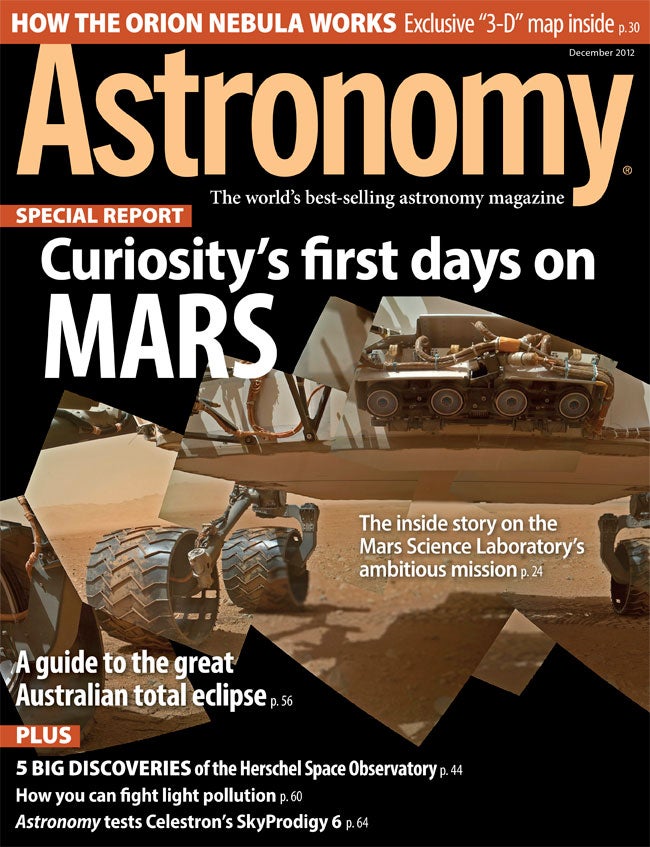
WAUKESHA, Wis. — In the early morning hours of August 6 (late August 5 in other parts of the world), NASA’s “Seven Minutes of Terror” became its “Seven Minutes of Triumph,” as the space agency’s John Grunsfeld so eloquently stated. At 5h32m Universal Time, the Mars Science Laboratory, a project in the works since 2004, touched down on the surface of the Red Planet in a feat of aerospace engineering.
The car-sized rover, dubbed Curiosity, is the first “astrobiologist” to explore our ruddy neighbor. And after testing out its suite of 10 instruments, the robot lab got right to work taking pictures of the martian terrain, analyzing soil composition, and blasting rock with its laser. In “Curiosity’s first days on Mars,” Associate Editor Bill Andrews relives the landing with NASA scientists and recaps the rover’s first month of exploration. Preliminary results have thrilled project scientists — and even surprised them.
To learn all about what the Mars Science Laboratory has already accomplished and its plans for the next year, pick up the December issue of Astronomy, on newsstands November 6.
“5 top discoveries of the Herschel Space Observatory”
Some of astronomy’s biggest findings each year don’t come from observations through optical telescopes. Different portions of the electromagnetic spectrum also provide insights into various phenomena in the universe. And in 2009, the European Space Agency launched a new space telescope to open a window on a seldom-explored radiation range: the submillimeter. In “5 top discoveries of the Herschel Space Observatory,” author Steve Eales, a member of the Herschel science team, explores what this orbiting submillimeter telescope has uncovered in the past three years, from distant galaxies to important molecules in space.
“How you can fight light pollution”
Fewer people are making connections with the wonders of the night sky as city and neighborhood lights drown out the stars. But this doesn’t mean the war against gratuitous upward illumination is lost. In “How you can fight light pollution,” managing director of the International Dark-Sky Association Scott Kardel provides the knowledge and tools necessary to promote awareness of the problem and tips on how to solve it. Each individual can make a difference in bringing back our starry skies.
December sky events visible without optical aid
- December 2 — Jupiter reaches its 2012 peak, shining at magnitude –2.8.
- December 11 — A crescent Moon joins Saturn, Venus, and Mercury in the morning sky.
- December 13/4 — The Geminid meteor shower peaks.
Also in the December 2012 Astronomy
- “How the Orion Nebula works” — Sorting out the regions within this huge stellar nursery is helping astronomers understand how stars and planets form.
- “10 great hits from an obscure catalog” — Start targeting Index Catalogue objects, and you’ll wonder why this massive list remains relatively unknown.
- “Totality rules Down Under” — Baily’s beads, two diamond rings, and a pearly white corona will greet observers who witness totality from Australia the morning of November 14.
- “Astronomy tests Celestron’s SkyProdigy 6“ — This 6-inch telescope sets a new standard for ease of use.
- “The Sky this Month” — Exclusive star charts will guide you through December’s night sky.
- The December issue of Astronomy also includes Astro News, Ask Astro, Bob Berman’s Strange Universe, Glenn Chaple’s Observing Basics, Stephen James O’Meara’s Secret Sky, Tony Hallas’ Imaging the Cosmos, Letters, Web Talk, New Products, Reader Gallery, and The Cosmic Grid.









